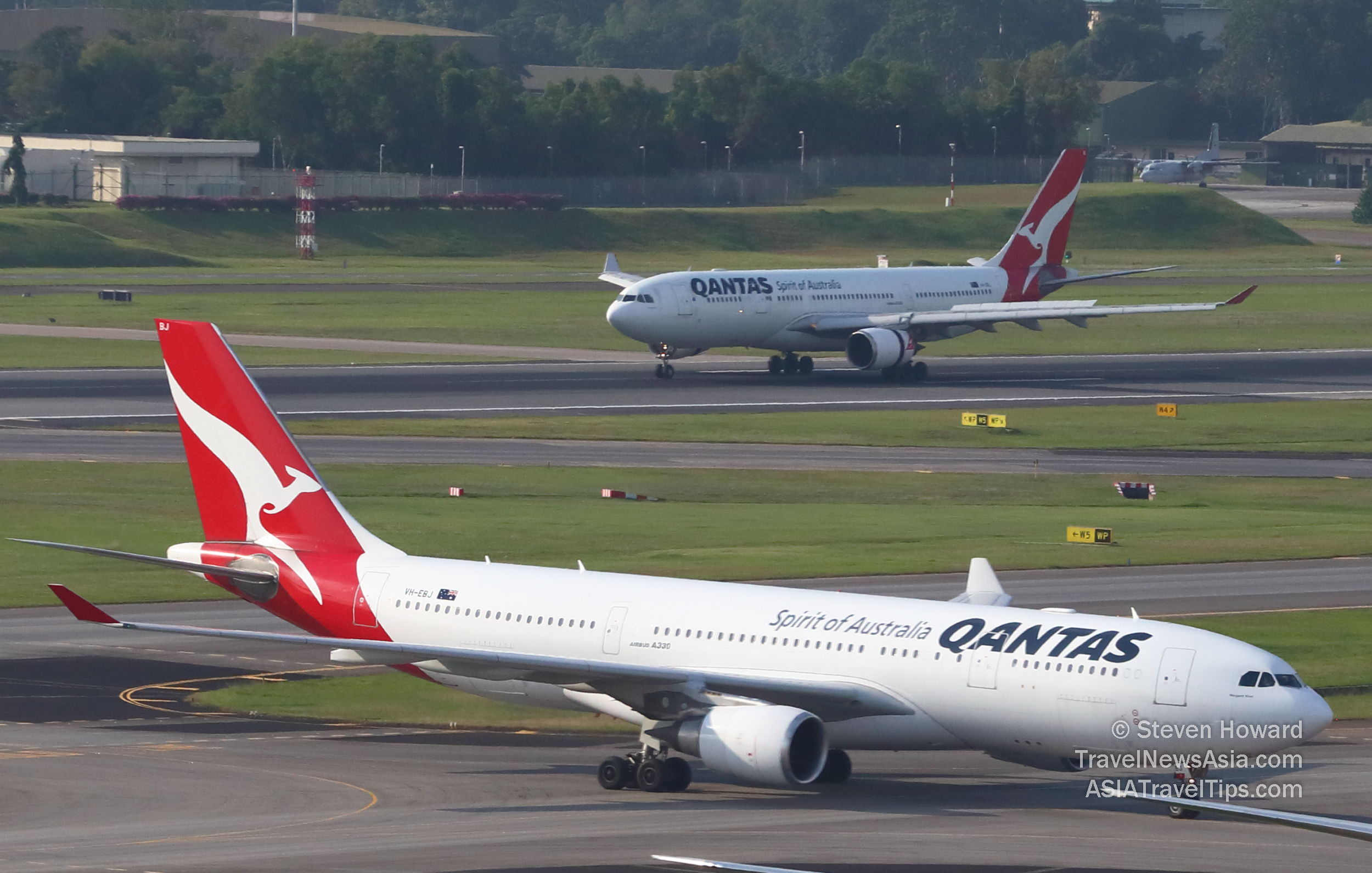|
The Qantas Group has reduced and suspended select
flights in response to falling demand caused by the ongoing
COVID19 outbreak.
The actions were unveiled as part of the group’s
half year financial results, where the net profit impact of the
COVID19 outbreak was estimated at between $100 million to $150
million for FY20 – a figure softened by lower fuel prices.
Reductions of around 5 per cent will be made to
Qantas and Jetstar’s flying between Australia and New Zealand.
There is no change to other key parts of the
Qantas International network, such as the US and UK, which the
airline says are
unaffected.

Reductions of around 2 per cent of total Group
domestic Australian flying in the second half are being made to
reflect market demand.
Customers with existing bookings who are impacted
by the reductions will be contacted directly and offered
alternatives. For most domestic bookings, this will involve slight
changes to their departure or arrival times. For international
bookings, customers can move flights to another date or connect
through another Australian city.
Below is a summary of the network changes.
Qantas International
Qantas International will cut 16 per cent of Asia
capacity until at least the end of May, impacting flights from
Australia to mainland China, Hong Kong and Singapore.
Sydney-Shanghai (the airline’s sole route to
mainland China) – will remain suspended.
Sydney-Hong Kong – reduced from 14 return flights
per week to 7.
Brisbane-Hong Kong – reduced from 7 return flights
per week to 4.
Melbourne-Hong Kong – reduced from 7 return
flights per week to 5.
Melbourne-Singapore – flights to be operated by
Boeing 787s instead of larger Airbus 380s (approx. 250 less seats
per flight).
Qantas will reduce flights across the Tasman by 6
per cent with cancellations on Sydney-Auckland, Melbourne-Auckland
and Brisbane-Christchurch. Jetstar will reduce its Tasman flying
by 5 per cent.
Jetstar Group
Jetstar Group will cut its capacity to Asia by 14
per cent until at least the end of May, impacting flights from
Australia to Japan and Thailand, and intra-Asia flights.
Cairns-Tokyo (Narita), Cairns-Osaka, Gold
Coast-Tokyo (Narita) and Melbourne & Sydney-Phuket will each be
reduced by up to two return flights per week.
Each of the Jetstar airlines in Asia – Jetstar
Asia (Singapore), Jetstar Japan and Jetstar Pacific (Vietnam) –
have suspended flights to mainland China and are reducing flights
across the region. In particular, Jetstar Asia is reducing total
seats by 15 per cent.
The group is looking at transferring an A320
aircraft from Jetstar to QantasLink to meet increased demand from
the resources sector in Western Australia.
Domestic Australia
Qantas and Jetstar will reduce total domestic
capacity by 2.3 per cent for the second half of the financial year
to better match demand. Most of these adjustments have already been
published with the balance to be made over the coming days.
Cancellations are largely focussed on travel between major capital
cities at off-peak times to minimise customer impact.
Demand for regional services is largely stable,
meaning that recently announced routes will start as planned,
including Sydney-Ballina (Byron Bay), Sydney-Mildura,
Tamworth-Brisbane and Sydney-Orange as well as additional flights
from Adelaide to Kangaroo Island and from Sydney to Bendigo.
Jetstar’s new Melbourne-Busselton (Margaret River) flights are
also unaffected.
Qantas Group CEO Alan Joyce said the airlines were
taking action now to limit exposure to softening markets.
“Coronavirus resulted in the suspension of our
flights to mainland China and we’re now seeing some secondary
impacts with weaker demand on Hong Kong, Singapore and to a lesser
extent Japan. Other key routes, like the US and UK, haven’t been
impacted. We’ve also seen some domestic demand weakness
emerging, so we’re adjusting Qantas and Jetstar’s capacity in the
second half. What’s important is that we have flexibility in
how we respond to Coronavirus and how we maintain our strategic
position more broadly. We can extend how long the cuts are in
place, we can deepen them or we can add seats back in if the
demand is there. This is an evolving situation that we’re
monitoring closely. We know demand into Asia will rebound. And we’ll
be ready to ramp back up when it does. These past few months have been extraordinarily
difficult for the tourism industry and we’ve tried to minimise the
impact of our capacity reductions as much as possible. About half
of Qantas’ domestic cancellations are between Sydney, Melbourne
and Brisbane, and we’re avoiding any route exits. The capacity we’re taking out is the equivalent
of grounding 18 aircraft across Qantas and Jetstar until the end
of May, which in turn impacts about 700 full time roles. To avoid
job losses we’ll be using leave balances across our workforce of
30,000 and freezing recruitment to help ride this out. We’ll also
take advantage of having some aircraft on the ground by bringing
forward planned maintenance,” said Mr Joyce.
Published on TravelNewsAsia.com at:
https://www.asiatraveltips.com/news20/242-COVID19Qantas.shtml
See latest
Travel News,
Interviews,
Podcasts
and other
news regarding:
Qantas,
COVID19.
|
Headlines: |
|
|
